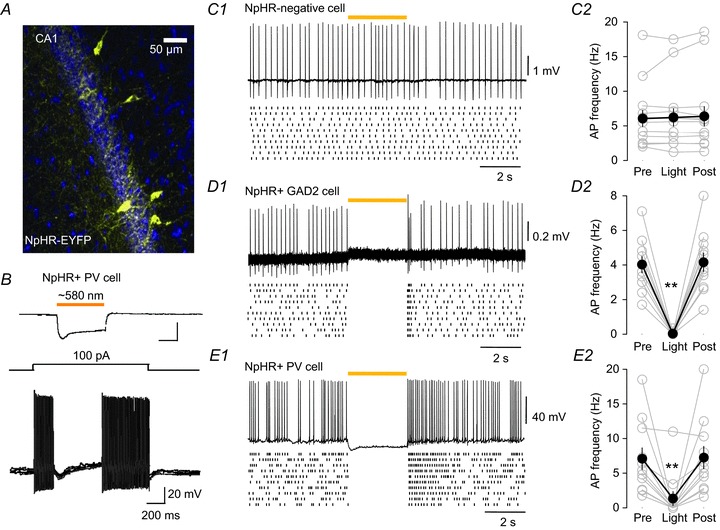Figure 1. Light stimulation of halorhodopsin (NpHR) inhibits action potential firing in interneurons expressing either glutamic acid decarboxylase 2 (Gad2) or parvalbumin (PV).

A, expression of NpHR-enhanced yellow fluorescent protein (EYFP) (yellow) in CA1 hippocampus of a PV-Cre mouse injected with adeno-associated virus (AAV)-NpHR-EYFP. B, whole-cell recording from an NpHR-EYFP-positive PV neuron. A 500 ms pulse of yellow light hyperpolarized the cell by >20 mV from its resting membrane potential (−51 mV, top trace) and suppressed current-induced (middle trace) action potential firing (lower traces; five trials overlapped). C1, light stimulation (3 s period indicated by the yellow bar) had no effect on carbachol (CCh)-induced action potentials in a control cell not expressing NpHR. The cell was recorded with a cell-attached patch in current-clamp mode. One example trace is shown at the top, and a dot-raster display (a dot represents the occurrence of a single action potential) of 10 consecutive traces is shown below. The lack of effect of the light is illustrated in both displays as well as in the group data (n= 10) plot in C2. D1, typical recording from a Gad2 cell expressing NpHR; same conventions as in C above; group data (n= 11) in D2. Action potential firing ceased with the onset of the light, and resumed immediately afterwards. Note the brief burst of action potentials that occurs at the end of the light pulse, representing ‘off-spikes’ triggered by the sudden termination of the NpHR-induced membrane hyperpolarization. E1, typical whole-cell current-clamp recording from a PV cell expressing NpHR; conventions as before, group data (n= 11) in E2. A membrane hyperpolarization accompanied the light stimulation, and a burst of off-spikes occurred at light offset. One-way repeated-measures ANOVAs followed by Tukey tests indicated that action potential firing was significantly suppressed during light stimulation for both Gad2 (P < 0.001) and PV (P < 0.002) groups, and that the firing 5–10 s after the light stimulation was not different from firing before the light. Light had no effect on firing in the control group (P= 0.978). **P < 0.01.
